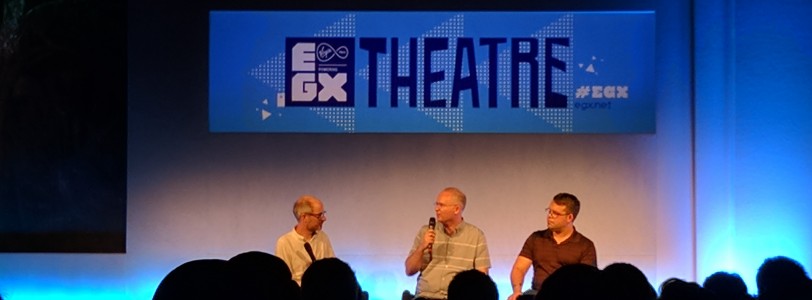EGX is not just the place to get hands-on with the latest and greatest games, it also plays host to a number of developer talks and sessions.
One such talk was with Rich Leadbetter and John Linneman from Digital Foundry, who have had a lot of time to play with Microsoft's upcoming Xbox One X. Rich Leadbetter actually got the exclusive first-look at the console at Microsoft's HQ in Redmond just days before a similar interview at EGX Rezzed, but he was still under embargo.
The question I think everyone wanted to know the answer to was "how does the Xbox One X perform?" The pair stated that the console "totally exceeded expectations" both in form factor and the speed of the processor, with Rich saying he went into the meeting with preconceptions of what a console can do in terms of power.
One thing that kept being highlighted during the talk was the element of choice that developers, and subsequently consumers, are going to have when it comes to gaming resolution. The backdrop to the talk was captured gameplay footage from Rise of the Tomb Raider playing on a One X in 'enriched 4K'. They mentioned that ROTTR has the option of playing in either native 4K (3840 pixels × 2160) or enriched 4K, which has a pixel count higher than 1080p (actual resolution not specified) but rather than push the resolution to the max, the game will instead provide more visual "bling", such as light bloom and particle effects. All of this will work to produce a more visually appealing game, and both Linnerman and Leadbetter stated they prefered the enriched mode to native 4K.
To conclude on the One X, Digital Foundry concluded that the console was a substantial upgrade, and one worth considering even if you only have a 1080p TV. They compared the upgrade from the One to the One X against the PS4 to the PS4 Pro, and said that when viewed through that lens, the One X is an even better upgrade. The reasoning was that the original Xbox was less powerful than the PS4, and couldn't even handle 1080p consistently, while the One X outperforms the PS4 Pro. The One X will allow for supersampling and HDR that will make even 1080p images look better, while having the power to offer the enriched mode demonstrated in ROTTR, or a native 4K experience if that's what you'd rather.
Speaking of Sony, Digital Foundry took opportunity to compare the console visions of the Japanese company against Microsoft. They concluded that Sony still envisage a 'traditional' console generation, whereby they release hardware that will be in circulation for 5-7 years, and then make a significant hardware jump when they release the new console. Microsoft, they argue, are seeking to adopt a more smartphone style upgrade path, whereby they release iterative hardware every couple of years for the people who want only the best.
It was asked whether or not such plans would eventually lead to modular consoles, and the answer here was "not likely". Leadbetter and Linneman are of the opinion that modular consoles will prove too complicated for consumers and developers. The latter especially will be adverse to such a move, given the added complexities it will create to the optimising process. Developing for the console market at the moment is relatively easy, given that developers know for a fact the hardware that each console gamer will have. Comparatively, the PC market can be more challenging when you can't make assumptions about the graphics card, the RAM, or even the operating system a gamer might be playing on.
Questions swung around to other manufacturers, namely Nintendo. "Switch is awesome" was the response, referring to Nintendo's latest hardware efforts. This was something I had just that morning found out for myself. It was said that Nintendo with the Switch had to some degree managed to achieve what Sony always envisioned with the PS Vita - a handheld console that can run the same AAA games as traditional home consoles. Indeed, with games like Doom, Skyrim (because what doesn't have Skyrim at this point) and Yooka-Laylee, Nintendo appear to have solved the developer support issue that plagued the Wii U.
Finally, a question of preference: Higher resolution or better framerate? Digital Foundry (correctly) answered that they prioritise framerate over resolution! 60fps baby!
The whole talk was streamed online, and can be watched below.










This looks soo interesting!